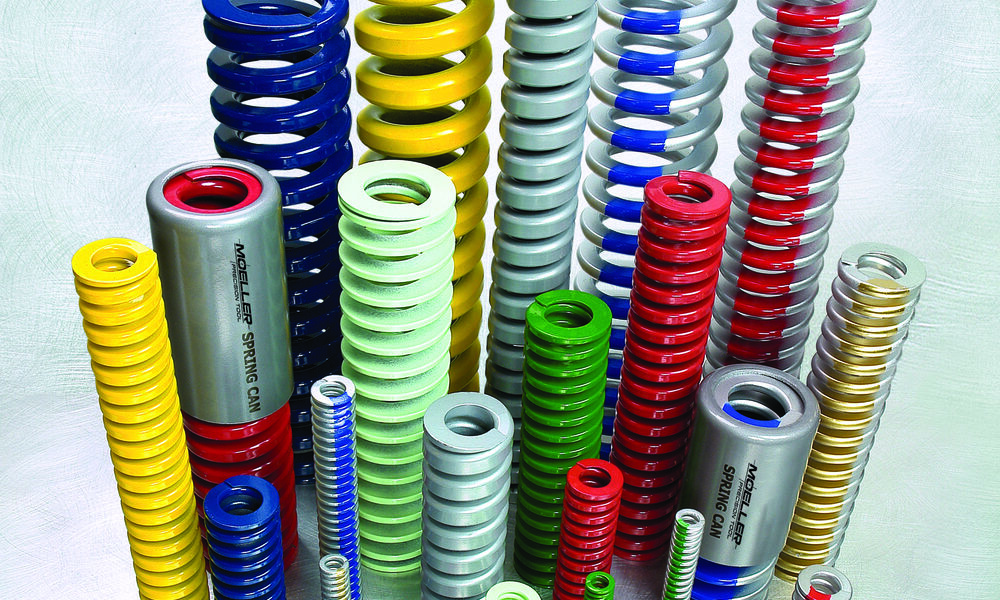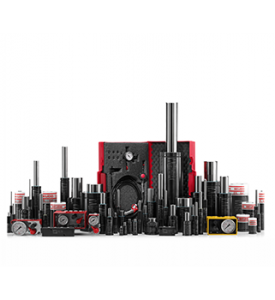In metal stamping, achieving precise and efficient results is paramount. Among the crucial elements that contribute to this success is the careful selection of die springs. These seemingly humble components play a vital role in maintaining optimal performance, prolonging tool life, and ensuring consistent quality in metal stamping operations.
But how does one navigate the myriad options available and make the right die spring choices? Read on.
Die Spring Overview
What is a die spring? Simply put, it’s a spring that holds materials in place during manufacturing processes. Die springs are designed to perform under high compression force and apply a specific amount of pressure to compression points on the materials they hold in place. They are also designed to withstand extremely high and low temperatures.
Some common applications of die springs include metal stamping, custom machining, and plastic injection molding.
How to Choose the Right Die Springs
There are a variety of die spring options available, and selecting the right ones will depend on your use case. Some of the most important considerations for die spring selection are required functionality, material, shape, and end style.
Function: Mechanical vs. Nitrogen Die Springs
There are two main types of die springs: mechanical and nitrogen gas springs. Mechanical springs are helically coiled metal springs that work by storing and applying compressive force mechanically by expanding and contracting. Mechanical die springs are the traditional type of spring used in dies and are similar in appearance to springs used broadly in other applications.
Nitrogen gas die springs exert force using compressed nitrogen gas, which is contained in a cylinder and compressed by a piston. Such designs can produce greater force than standard mechanical die springs and are also engineered with more safety features.
When deciding between mechanical and nitrogen gas springs, it’s crucial to consider:
- Cost — Mechanical die springs will have a significantly lower upfront cost than nitrogen springs. But remember, with lower/higher cost often comes lower/higher quality.
- Longevity — Nitrogen gas springs will last much longer than mechanical springs, reducing the overall cost of the component over its lifetime
- Strength — Nitrogen die springs are capable of exerting more force than mechanical options, which means that you may need more mechanical springs to obtain the same result.
- Safety — Mechanical die springs are just springs; for extreme conditions or complex dies, nitrogen gas die springs are the only option that offers safety features.
Material
Some of the most common die spring materials include oil-tempered steel, steel alloys, chrome alloys, chrome silicon, and chrome vanadium. Chrome layers on alloys improve corrosion resistance. Chrome silicon and chrome vanadium are less common due to their increased cost, but they are much stronger than other die spring materials.
Mechanical die springs are typically coated or marked with colored vinyl that is color-coded to indicate the working load of the die springs. The working load required will correspond with the appropriate die material. Stronger materials such as chrome silicon are called for in applications requiring fewer stress points, greater accuracy, or high temperatures.
Shape: Rectangular vs. Round vs. Oval Wire
While the shape of mechanical die springs themselves is helical, there are three different wire shapes out of which die springs can be made: rectangular, round, and oval.
Rectangular wire die springs are compliant with ISO Standard 10243 and are available in inch and metric sizes. Rectangular wire produces more force than round or oval wire, and therefore, rectangular wire die springs are available with higher load capacity options. However, because the wire is rectangular, this results in the spring twisting as it moves, resulting in stress that can lead, eventually, to the failure of the spring.
Round wire die springs are commonly used in the US and are generally smaller in size and used for lighter compression applications. Round wire will withstand stress well but cannot produce the same force as rectangular wire springs of the same dimensions.
Oval wire die springs are standard in the US. Their design optimizes for the perfect compromise between the stress resistance of round wire and the load capacity of rectangular wire. Moeller Precision Tools now carries new and improved oval die springs, our R series, which include four load capacity options and are completely interchangeable with Raymond and other competing brands.
Ends: Closed vs. Open
Mechanical die springs can have either open or closed ends. Because mechanical springs are helical, their ends can terminate in one of two ways: with a complete helix, leaving an end of the spring coil unattached, or with an incomplete helix, attached to the previous helix and connecting the coil end back to the spring. Open ends result in an uneven surface unless they are grounded; depending on the application, this may or may not affect the performance of your die. Closed-ended die springs will have even end surfaces, but because the final helices are incomplete, the compression of the spring may be altered or reduced.
Get Top-Quality Die Springs From Moeller Precision Tool
Moeller Precision Tool carries an extensive variety of mechanical and nitrogen gas die springs to meet the needs of your application, including load options not carried by our competition. Learn more about our reliable, high-quality die springs, check out our die spring offerings, or contact us today.


